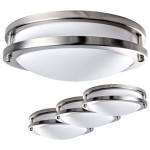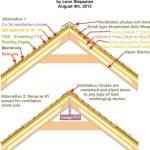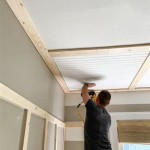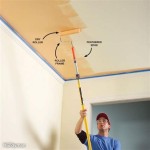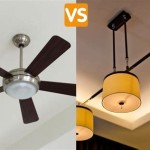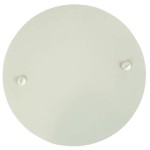Does Popcorn Ceiling Contain Asbestos?
Popcorn ceilings, also known as acoustic ceilings or stucco ceilings, were a popular choice in residential construction from the 1950s through the 1980s. Their textured surface was favored for its ability to dampen sound and hide imperfections in the ceiling. However, many of these ceilings contain asbestos, a naturally occurring mineral fiber that was widely used in building materials for its heat resistance, strength, and insulating properties. Understanding the potential presence of asbestos in popcorn ceilings is crucial for homeowners, contractors, and anyone involved in renovation or demolition projects.
Asbestos was added to popcorn ceiling mixtures to improve the texture, fire resistance, and durability of the material. Before the dangers of asbestos exposure were widely known, it was considered a cost-effective and beneficial additive. The amount of asbestos in popcorn ceiling mixtures can vary, but even small amounts can pose a health risk when disturbed. The primary concern is that asbestos fibers can become airborne when the ceiling is scraped, drilled, or otherwise damaged. Inhaling these fibers can lead to serious respiratory diseases, including asbestosis, lung cancer, and mesothelioma.
Because of the health risks associated with asbestos exposure, the United States Environmental Protection Agency (EPA) began to regulate its use in the 1970s. The Clean Air Act of 1978 effectively banned the use of asbestos in many building materials, including popcorn ceilings. However, materials manufactured before this ban may still contain asbestos, and existing installations were not required to be removed. Therefore, any popcorn ceiling installed before the late 1970s or early 1980s should be treated as potentially asbestos-containing material (ACM).
Determining whether a popcorn ceiling contains asbestos requires testing by a qualified professional. Visual inspection alone is not sufficient to identify asbestos. A sample of the ceiling material must be collected and analyzed in a laboratory using polarized light microscopy (PLM) or other approved methods. Homeowners should not attempt to collect samples themselves, as this can inadvertently release asbestos fibers into the air. Instead, they should hire a certified asbestos inspector who is trained to safely collect and handle samples.
Key Points Regarding Asbestos in Popcorn Ceilings
The History of Asbestos Use in Popcorn Ceilings
The popularity of popcorn ceilings surged in the mid-20th century due to their aesthetic and practical benefits. Builders and homeowners appreciated their ability to create a textured look while concealing imperfections in the ceiling surface. The addition of asbestos further enhanced the appeal of these ceilings by providing fire resistance and improved durability. Asbestos was considered a versatile and inexpensive material, making it a common ingredient in various building products, including insulation, flooring, and ceiling materials.
However, the widespread use of asbestos came at a significant cost. As scientific research revealed the link between asbestos exposure and severe health problems, the demand for asbestos-containing materials gradually declined. The EPA's regulations in the 1970s marked a turning point, leading to a gradual phase-out of asbestos in many applications. Despite these regulations, popcorn ceilings installed before the ban are still present in numerous homes and buildings across the United States.
The regulations did not mandate the removal of existing asbestos-containing materials, leaving many homeowners with the decision of whether to remove or encapsulate their popcorn ceilings. Encapsulation involves sealing the ceiling with a specialized coating to prevent the release of asbestos fibers. This method is generally less expensive than removal but requires ongoing monitoring to ensure the coating remains intact. Removal, on the other hand, involves the complete removal of the asbestos-containing material, which is a more costly and complex process that must be carried out by trained professionals.
The Dangers of Asbestos Exposure From Popcorn Ceilings
The primary danger associated with asbestos-containing popcorn ceilings is the potential for asbestos fibers to become airborne and inhaled. This can occur during renovation, demolition, or even routine maintenance activities. Disturbing the ceiling surface, such as by scraping, sanding, or drilling, can release microscopic asbestos fibers into the air. These fibers can remain suspended in the air for extended periods, increasing the risk of inhalation.
Prolonged exposure to asbestos fibers can lead to a range of serious health problems. Asbestosis is a chronic lung disease characterized by scarring of the lungs, which can cause shortness of breath, coughing, and chest pain. Lung cancer is another significant risk, as asbestos exposure is a known carcinogen. Mesothelioma is a rare and aggressive cancer that affects the lining of the lungs, abdomen, or heart. These diseases can take decades to develop, making it difficult to trace their origin back to specific asbestos exposure events.
Children, elderly individuals, and those with pre-existing respiratory conditions are particularly vulnerable to the effects of asbestos exposure. Even low levels of exposure can pose a risk, and there is no known safe level of asbestos exposure. Therefore, it is crucial to take precautions to minimize the risk of disturbing asbestos-containing materials and to seek professional help when dealing with popcorn ceilings that may contain asbestos.
Testing and Remediation of Asbestos in Popcorn Ceilings
The first step in addressing a popcorn ceiling suspected of containing asbestos is to have it tested by a certified asbestos inspector. The inspector will collect samples of the ceiling material and send them to a laboratory for analysis. The laboratory will use specialized equipment to identify and quantify the presence of asbestos fibers in the samples. The results of the test will determine whether the ceiling contains asbestos and, if so, the type and concentration of asbestos fibers.
If the popcorn ceiling is found to contain asbestos, homeowners have several options. One option is to leave the ceiling undisturbed. As long as the ceiling is in good condition and not prone to damage, it may not pose an immediate health risk. However, this option requires ongoing monitoring to ensure the ceiling remains intact. Any planned renovation or demolition work should be carefully evaluated to avoid disturbing the asbestos-containing material.
Another option is to encapsulate the ceiling. This involves applying a specialized coating to seal the ceiling and prevent the release of asbestos fibers. Encapsulation is a less expensive alternative to removal but requires careful preparation and application to be effective. The coating must be durable and resistant to damage, and it should be inspected regularly to ensure it remains intact. Professional assistance is recommended to ensure the encapsulation is performed correctly.
The most definitive solution is to remove the asbestos-containing popcorn ceiling. This is a complex and potentially hazardous process that should only be performed by licensed and experienced asbestos abatement contractors. These professionals have the training, equipment, and expertise to safely remove the ceiling material while minimizing the risk of asbestos fiber release. The removal process typically involves sealing off the work area, using specialized tools and equipment to remove the ceiling material, and disposing of the asbestos-containing waste in accordance with federal, state, and local regulations.
Following asbestos abatement, the work area must be thoroughly cleaned and inspected to ensure that all asbestos fibers have been removed. Air samples are typically collected to verify that the air quality meets acceptable standards. Once the area has been cleared, it can be safely renovated or reoccupied. Homeowners should obtain documentation from the asbestos abatement contractor confirming that the work was performed in compliance with all applicable regulations.
When considering the presence of popcorn ceilings in older homes, remember that taking appropriate precautions is crucial in protecting your health and the health of others. Consulting with qualified professionals for testing and remediation is important for ensuring safety and compliance with applicable regulations. Asbestos is a serious health threat, and proper handling of asbestos-containing materials is imperative for preventing exposure and related illnesses.

How To Tell If Your Popcorn Ceiling Has Asbestos

How Can You Tell If There Is Asbestos In Popcorn Ceilings

Is Asbestos In Your Home Look For Popcorn Ceiling

Do Popcorn Ceilings Have Asbestos Removal Pro

Does Your Popcorn Ceiling Contain Asbestos Mesothelioma

Asbestos In Popcorn Ceilings How To Detect What Do

How To Tell If Popcorn Ceiling Has Asbestos Removal Pro

Asbestos In Popcorn Ceilings Is Your Family At Risk

Popcorn Ceilings Asbestos Everything You Should Know

Does Your Textured Ceiling Have Asbestos Survey
Related Posts
